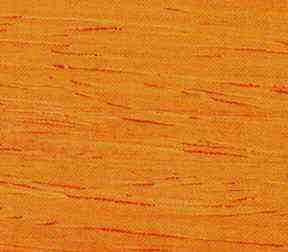
Cabrit (Zanthoxylum rhetsa)
Family: Rutaceae
Common names: Cabrit, Kaitana, Kasabang, Kayetana, Kayutana, Noyer, Salai, Sarai
Distributed in: Bangladesh, India, Indonesia, Malaysia, Papua New Guinea, Philippines, Sri Lanka (Oceania and S.E. Asia)
Distribution overview: Various species in the genus Zanthoxylum are reported to occur in the Philippines and the Malay Peninsula. The most important species in the genus for timber in the Philippines is Cabrit (Z. rhetsa), which is widely but sparsely distributed from northern Luzon to Palawan and Mindanao. It grows in thickets and forests at low and medium elevations.
Common uses: Blinds, Bridge beams, Bridge construction, Bridge joists, Chairs, Chests, Concealed parts (Furniture), Decorative plywood, Desks, Dining-room furniture, Dowell pins, Dowells, Drawer sides, Fine furniture, Floor lamps, Furniture , Furniture components, Furniture squares or stock, Gunstocks, Handles, Hatracks, Kitchen cabinets, Living-room suites, Office furniture, Planks, Plywood, Radio - stereo - TV cabinets, Rifle stock, Rustic furniture, Shafts/Handles, Shutters, Sills, Sporting Goods, Stools, Tables , Tool handles, Utility furniture, Wardrobes, Windows
Environment profile: Vulnerable in parts of its natural habitat
Tree size: Trunk diameter is 150-200 cm
Colors: the heart isUniform yellow to buff , Yellowand the sapwoodRed, Yellow.The grain isStraight, occasionally curly or wavy , the textureModerately fineand the lusterGlossy
Natural durability: Susceptible to insect attack, Very durable
Odor: No specific smell or taste
Kiln Drying Rate: Slow
Drying Defects: Distortion, Splitting
Ease of Drying: Slowly
Comments: Timber produced by various species of the genus are similar and difficult to differentiate
Cutting Resistance: Too heavy for general purpose plywood
Gluing: Fairly Difficult to Very Difficult
Nailing: Fair to Good , Very Good to Excellent
Planing: Very Good to Excellent
Response to hand tools: Smooth, shiny surface
Screwing: Fair to Good Results, Very Good to Excellent Results; Turning: Very Good to Excellent Results
Polishing: Very Good to Excellent;
- Numerical data Metric
- Numerical data English
- Strength properties
- References
 |
 |
 |
 |
| Item |
Green |
Dry |
Metric |
| Specific Gravity |
0,5 |
0,56 |
|
| Density |
|
641 |
kg/m3 |
| Bending Strength |
551 |
693 |
kg/cm2 |
| Crushing Strength |
38 |
59 |
kg/cm2 |
| Hardness |
|
317 |
kg |
| Impact Strength |
88 |
81 |
cm |
| Shearing Strength |
|
78 |
kg/cm2 |
| Stiffness |
88 |
100 |
1000 kg/cm2 |
| Tangential Shrinkage |
6 |
|
% |
| Radial Shrinkage |
4 |
|
% |
| Weight |
801 |
624 |
kg/m3 |
| Maximum Load |
0,56 |
0,84 |
cm-kg/cm3 |
| Toughness |
|
116 |
cm-kg |
| Static Bending |
339 |
468 |
kg/cm2 |
|
 |  |  |  | | Item | Green | Dry | English | | Bending Strength | 7851 | 9868 | psi | | Crushing Strength | 551 | 846 | psi | | Density | | 40 | lbs/ft3 | | Hardness | | 699 | lbs | | Impact Strength | 35 | 32 | inches | | Maximum Crushing Strength | 3832 | 5615 | psi | | Shearing Strength | | 1120 | psi | | Static Bending | 4833 | 6659 | psi | | Stiffness | 1258 | 1431 | 1000 psi | | Toughness | | 101 | inch-lbs | | Work to Maximum Load | 8 | 12 | inch-lbs/in3 | | Specific Gravity | 0.5 | 0.56 | | | Weight | 50 | 39 | lbs/ft3 | | Radial Shrinkage | 4 | | % | | Tangential Shrinkage | 6 | | % | | Volumetric Shrinkage | 10 | | % | |
Resists denting and marring
High in density
Heavy
Hardness = medium
Compression strength (parallel to grain) = medium
Bending strength (MOR) = medium
It is closer in strength to Mahogany than either Teak or White oak, which have higher bending strength.
It resists denting and marring about as well as white oak or birch
Its strength in compression parallel to grain is medium, but ower than that of Teak.
Desch, H. E. 1954. Manual of Malayan Timbers - Volume II. Malayan Forest Records, No. 15. Malaysia Publishing House Ltd., Singapore.Lauricio, F. M., Bellosillo, S. B., The Mechanical and Related Properties of Philippine Woods, The Lumberman, 12(5):A-H.Limaye, V.D. 1954. Grouping of Indian Timbers and Their Properties, Uses, and Suitability. Indian Forest Records (New Series). Timber Mechanics. Volume 1 No. 2. Manager of Publications (Publisher, DelhiNegi, G.S. and D.N. Bhatia. 1958. Physical and Mechanical Properties of Woods Tested at the Forest Research Institute, Report X. Indian Forest Records, New Series. Timber Mechanics, Vol. 1, No. 11. Timber Mechanics Branch, Forest Research Institute, Dehra Dun.Reyes, L.J. 1938. Philippine Woods. Department of Agriculture and Commerce, Technical Bulletin 7, Commonwealth of the Philippines, Bureau of Printing, Manila.WCMC. 1992. Conservation Status Listing - Trees and Timbers of the World. World Conservation Monitoring Center-Plants Programme, Cambridge, CB3 ODL, United Kingdom.
|








